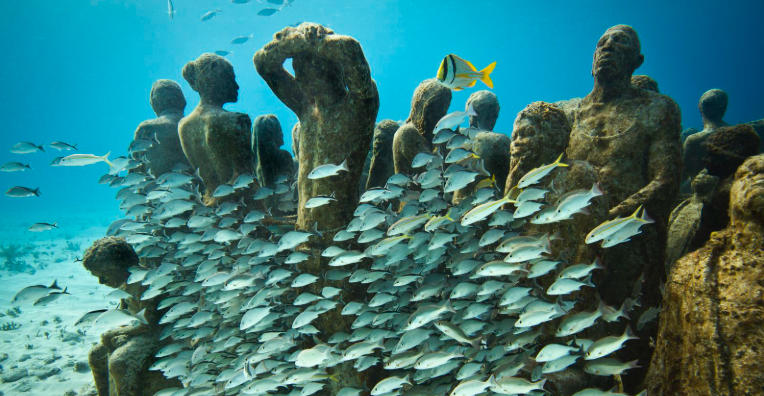Marine Memory in Rocks
Throughout Earth’s long evolutionary history, coral reefs were once among the most thriving ecosystems in shallow seas. Surprisingly, many of today’s majestic limestone mountains, rocky platforms, and karst landforms were once coral reefs in the ancient ocean. The coral fossils preserved in these rocks provide invaluable evidence of seafloor rise and fall, plate tectonics, and paleoclimate.
How Coral Reefs Accumulated into Thick Structures
The core of a coral reef consists of calcium carbonate skeletons secreted by coral polyps. As large numbers of coral polyps died, their skeletons accumulated, gradually thickening the reef. Simultaneously, fragments of seashells, sponge remains, microbial remains, and sedimentary particles from the ocean continuously mixed in, making the reef’s structure more robust and complex, laying the material foundation for its later transformation into rock.
Diagenesis: The Key Process in the Transformation of Coral Reefs into Limestone
With changes in sea level or deepening sedimentation, coral reefs may be buried in deeper layers of seabed sediment. Under immense pressure and rising temperatures, the originally porous coral skeleton is compacted, and the pores are gradually filled with minerals such as calcite. The calcium carbonate structure also recrystallizes, transforming it into dense, hard limestone. This process, known as diagenesis, is the core step in the transformation of coral reefs from ecosystems into rock.
Plate Tectonics Reveal Coral Rocks
When plates push, uplift, or the Earth’s crust rises, limestone that was originally located on the seabed is exposed to land and even high mountains. The karst landscapes of Guangxi, China, the limestone caves of Sabah, Malaysia, and parts of the mountains in Utah, USA, all preserve clear coral fossils. These areas, once warm, shallow seas, are now land, fully demonstrating the astonishing power of Earth’s dynamics.
Ancient Coral Reefs Shape Unique Landforms and Provide Scientific Clues
The limestone strata formed by ancient coral reefs have created unique landscapes such as caves, stone forests, and peak forests. The fossils within them provide valuable information for paleoecological research. By analyzing coral fossils, scientists can infer sea temperature, salinity, marine chemical composition, and paleoclimate at the time, providing a reference for studying changes in Earth’s environment.
Conclusion: A Natural Miracle Frozen in Millions of Years
The transformation of ancient coral reefs into rock is a natural evolutionary process spanning millions, even hundreds of millions of years. It records the history of life, ocean changes, and crustal movements, ultimately shaping the diverse landscapes we see today. Every piece of limestone containing coral fossils is a page in Earth’s natural history book.

